There is never a good time to experience a pest problem, but if we had to rank the worst times to find a hidden pest, nighttime would be at the top of the list. This time of day is supposed to be the most restful and relaxing, hence why it’s so aggravating to discover that pests are living in your home when you are trying to get some sleep. Let’s take a look at some of the reasons why certain pests enjoy the night life before diving into 5 of the most common nocturnal pests and their nighttime habits.
Why Nighttime?

First of all, this question may have been on your mind since the moment you read the title. It seems strange to think about pests being active at night when there are plenty of resources available to them during the day. Whether a pest is active when the sun is up or down completely depends on the type. Bees, wasps, and flies are clearly energetic during the day, while bed bugs, spiders, and moths come out when the sun goes down. Each species has unique features and abilities that allow it to be active at its designated time of day, so we (thankfully) don’t see every critter at the same time.
The primary reasons why certain pests prefer to come out at night are:
- Safety: Nighttime pests have more hiding spots to choose from since everything is dark, so they’re less likely to be caught by a predator.
- Senses: Since they are equipped to live their lives at night, nocturnal pests have senses that are naturally attuned to the darkness and quiet of nighttime. They would be overstimulated in the daytime because of the excessive lights, people, and sounds.
- Temperature: The outside temperature is more regulated at night since the sun is down. It’s naturally cooler and therefore more tolerable for pests that cannot survive high temperatures.
- Food: These pests can forage for food more easily at night because of all the previous factors. They don’t have to compete with aggressive daytime pests, and nocturnal pests are prepared to find everything they need hidden among the shadows.
Now that we know the reasons why some critters enjoy being “night owls,” let’s discuss 5 infamous nocturnal pests.
Rodents
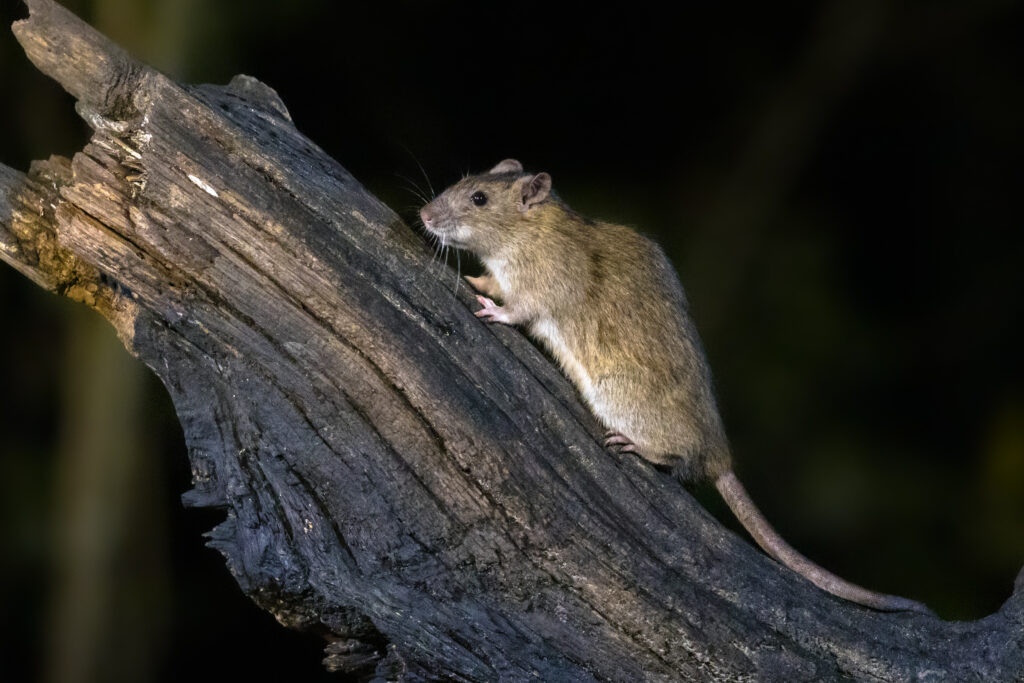
Rodent infestations typically aren’t discovered until they build their nest and start reproducing, and a major reason for this is because they do all of their busywork at night. Rats and mice are always on the move since they need to provide for their ever-growing families. Whether it’s foraging for accessible food or searching for soft nesting materials, rodents spend the nights scavenging for their necessities. They mark their paths with urine and droppings that will unfortunately contaminate and stain surfaces.
Since their young stay with the family for about 2 weeks, rodents need to find quite a bit of food for their growing offspring. They will eat just about anything, but their favorites include nuts, grains, seeds, pet food, veggies, and fruits. If you find rodent droppings and gnaw marks anywhere in your home, you likely have a rodent problem on your hands that should be handled by a professional. One of the easiest ways to differentiate between rats and mice is by observing their temperaments: rats are eager explorers and mice are scared of anything larger than themselves!
Bed Bugs
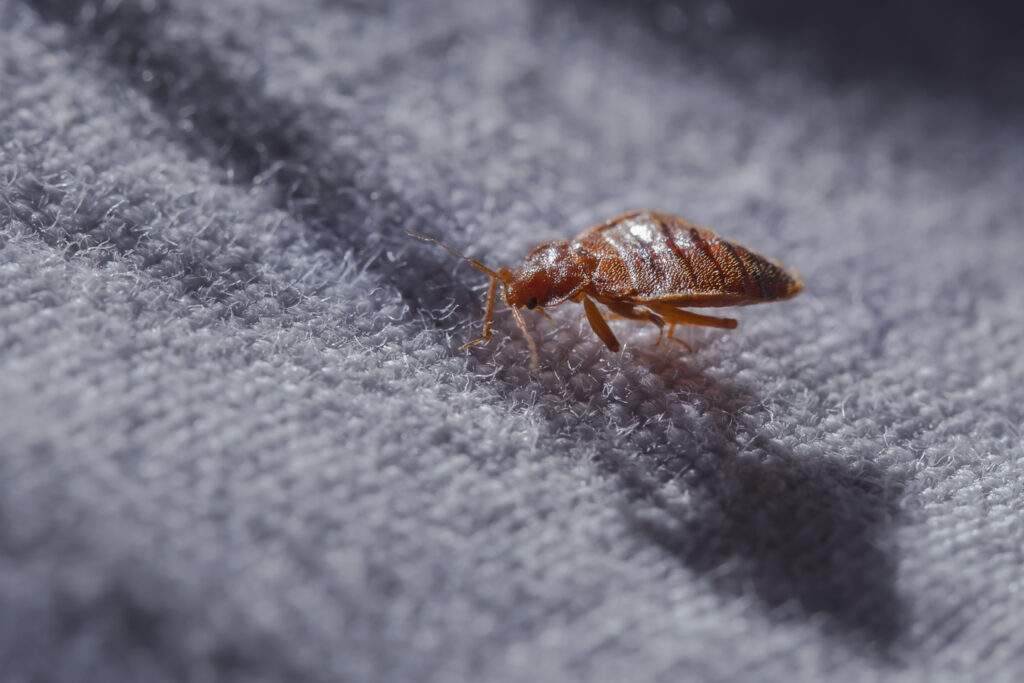
The quintessential nighttime pests, bed bugs are hardly ever discovered during the day (unless there is a full inspection due to a suspected invasion). They do all of their feeding at night when their wam-blooded hosts are at their most vulnerable. Although bed bugs can live for a year without any food, they prefer to be near a food source at all times. Female bed bugs can’t lay eggs until they have a blood meal, so the more they feed, the more eggs they produce. They can lay up to 20 eggs just from one feeding!
Bed bugs can flatten their bodies to fit within the smallest crevices in furniture in order to stay completely hidden between feedings. Their favorite hiding spots include any part of beds, pieces of furniture, wall outlets, and drawers. Bed bugs travel by attaching to a bag or piece of clothing, then going home with the unsuspecting owner. They can do this day or night, but they won’t try to feed until darkness falls. Bed bug bites are distinct from those of other pests because they bite in clusters rather than random areas, and they are not known to spread diseases through their saliva.
Roaches
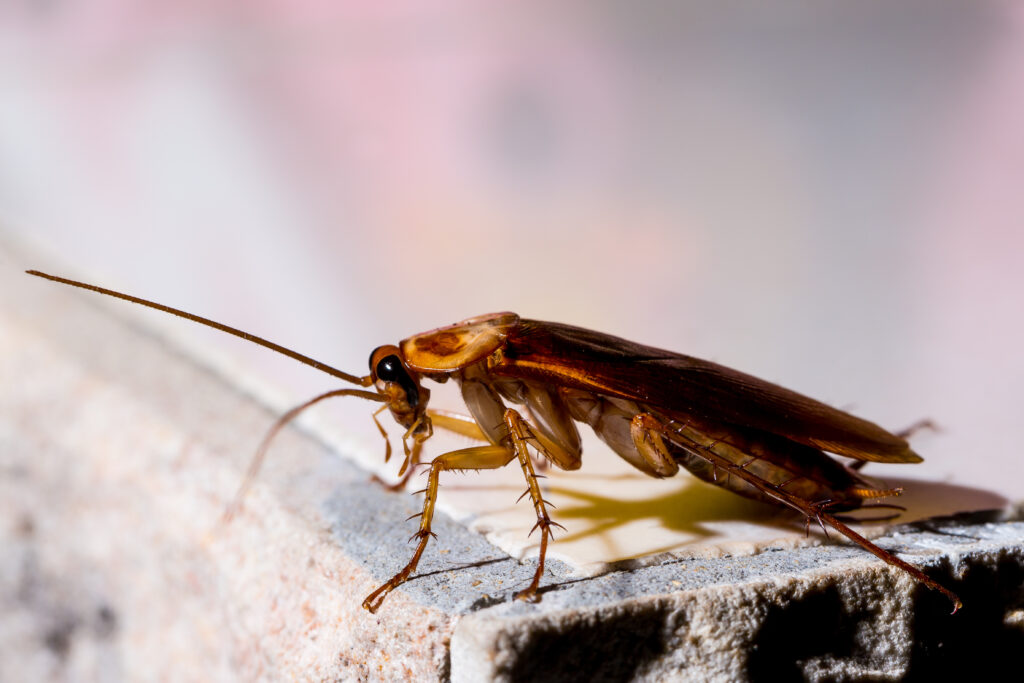
Bad dreams are a risk we take when we fall asleep, but at least we wake up from those. Roach problems, on the other hand, are not the type of nightmare we can escape by simply opening our eyes. These pests cause issues wherever they go because they are filthy creatures that spread disease, aggravate allergy and asthma symptoms, and contaminate everything they touch. Roaches like to stay in warm, humid areas that are close to reliable food sources. They live in groups and provide for their young, which becomes a major task since females produce about 15 to 20 eggs at a time.
Roaches are prime nighttime pests because they prefer to live in the darkest spaces anyway, so they can hide with ease once the sun sets. If any artificial lights turn on near a group of roaches, they will scatter and find the closest hiding spot. In fact, this habit is exactly why roaches are so riddled with disease. They carry harmful pathogens for over 30 diseases that come from the gross places they invade, like sewers and garbage dumps. The roaches spread these pathogens with their legs, shells, saliva, and droppings. If they find a reliable food source and a dark hiding spot, roaches will never willingly leave the area.
Centipedes
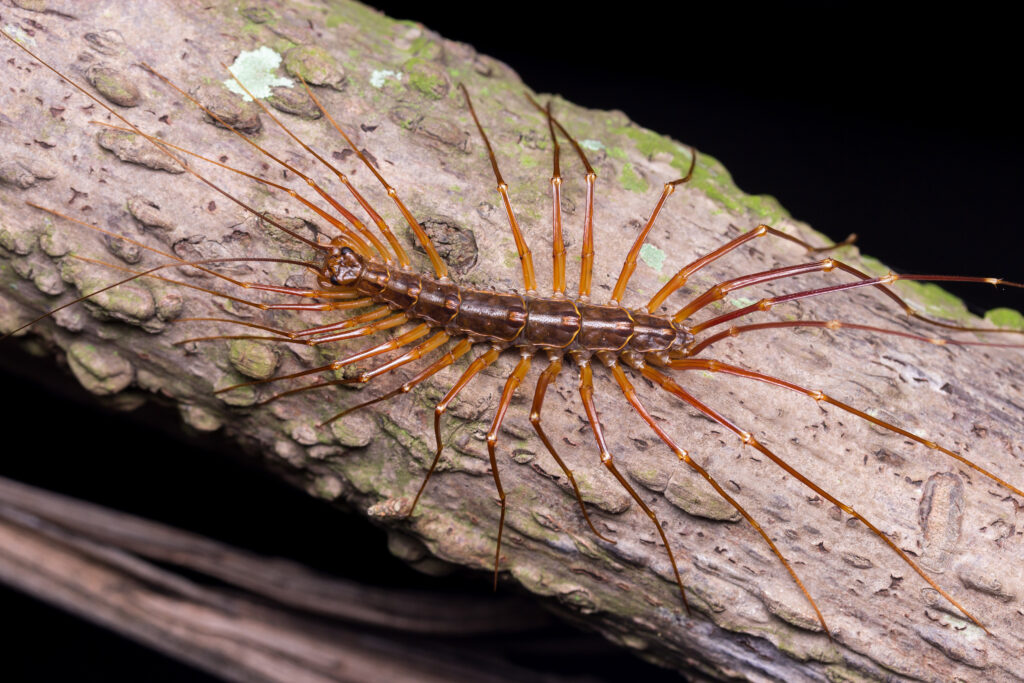
Speaking of nightmares, centipedes are one of the scariest pests based purely on their appearance. House centipedes have anywhere from 15 to 177 legs, which they use to run in erratic patterns in order to catch their prey. This species has flat bodies and needs to live in humid areas to survive. They either have terrible vision or no eyes at all, so house centipedes don’t have any problems with living in pitch-black spaces.
Since they need moisture, house centipedes are often found in laundry rooms, bathrooms, and basements. They hide during the day by going underneath boxes or into drains, then emerge at night to search for other nocturnal pests they can eat. These carnivorous creatures provide some natural pest control by devouring some of our most frustrating pests, including spiders, roaches, and crickets. House centipedes can technically bite us with their claw-tipped legs, but they would much rather run away from any creature that seems to be a threat to them.
Silverfish
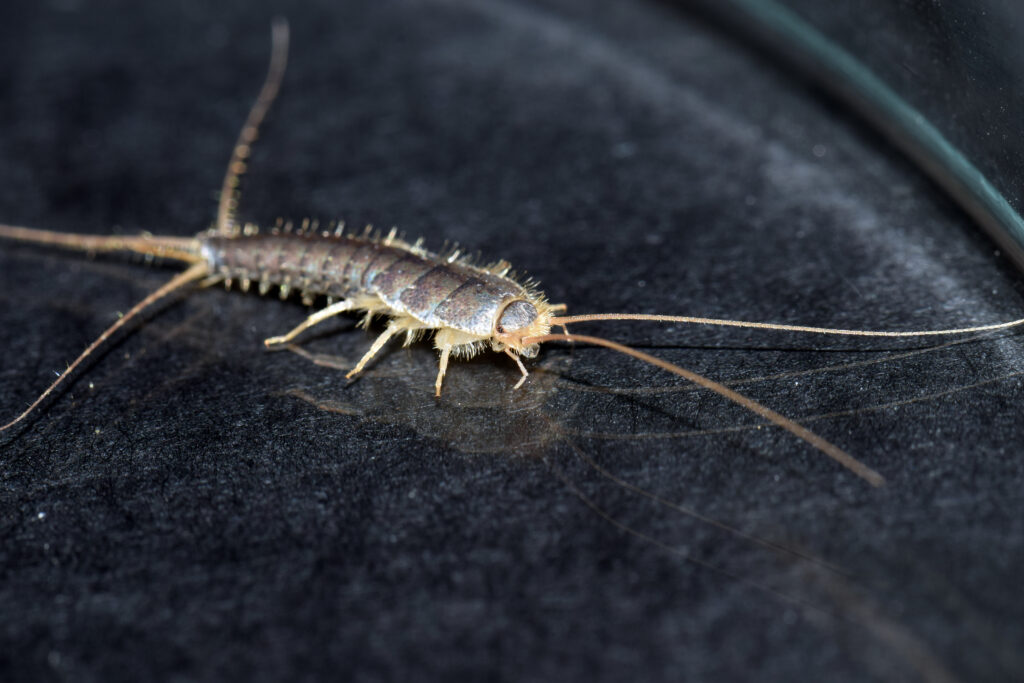
Silverfish may be a relatively harmless pest to humans, but they are still an unwelcome presence. These silvery-blue creatures have bristles on their tails and don’t have wings, so they have to crawl everywhere. Silverfish also prefer to live in dark and humid spaces at all times. This leads them to dark corners and unnoticeable hiding spots in laundry rooms, basements, garages, bathrooms, and attics. They typically invade in cooler weather, but silverfish are a year-round pest when they make their way into a home.
These pests are surprisingly omnivorous and spend their nights searching for safe food sources. Silverfish will eat a variety of items that are heavy in carbohydrates and protein. Their favorites include book bindings, glue, wallpaper, flour, insulation, and other silverfish. If they successfully find a humid hiding spot, the eggs from female silverfish will hatch sooner. Since they lay anywhere from 2 to 20 eggs at a time, a silverfish infestation can happen before you know it. The evidence from their feeding often gives away their presence, as silverfish leave jagged holes in the items that served as their midnight snacks.
Protect Your Sleep With Romney Pest Control!
A good night’s sleep is essential for everyone, and a nocturnal pest infestation would be quite counterproductive to the experience. That is why the local pest experts of Romney Pest Control are dedicated to solving every pest issue as efficiently as possible. Between our continuous inspections, thorough treatments, and educated advice, we guarantee that we will have your home pest-free in no time. Take back your peaceful nighttime routine and contact us today for a free quote on our reliable pest control services!
Citations
Bed bugs. (n.d.). Pointe Pest Control. Retrieved January 18, 2024, from https://pointepestcontrol.com/services/bed-bugs/
Millipedes/centipedes. (n.d.). Pointe Pest Control. Retrieved January 18, 2024, from https://pointepestcontrol.com/services/millipedes-centipedes/
Nocturnal insects: Which bugs are most active at night?. (2020, February). Aptive. Retrieved January 18, 2024, from https://goaptive.com/nocturnal-insects
Sally. (2023, November 30). Nocturnal pests that are out at night. Diamond Pest Control. Available at https://diamondpestcontrol.co.uk/nocturnal-pests-that-are-out-at-night/ (Accessed on January 18, 2024).
Silverfish. (n.d.). Pointe Pest Control. Retrieved January 18, 2024, from https://pointepestcontrol.com/services/silverfish/




